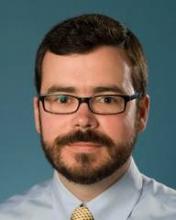In a 3-year pilot study, small- and medium-sized primary care practices that had created patient-centered medical homes were not successful in reducing costs or curbing hospital and emergency department visits.
The 32 Pennsylvania practices also had a limited effect on quality of care, improving nephropathy monitoring in diabetes patients, but showing no significant improvement on 10 other quality metrics.
The results come from the southeastern region of the Pennsylvania Chronic Care Initiative, a multipayer pilot study that provided technical assistance and financial incentives to internal medicine, family medicine, and pediatric practices, as well as some nurse-managed health centers that were seeking patient-centered medical home (PCMH) recognition from the National Committee on Quality Assurance (NCQA).
The findings were published Feb. 26 in JAMA (JAMA 2014;311:815-25).
Dr. Mark W. Friedberg, of the RAND Corporation in Boston, and his colleagues compared the performance of the 32 pilot practices to that of 29 similar practices in Pennsylvania. Each of the pilot sites achieved NCQA recognition as a PCMH by the third year of the study, with half achieving level 3 status. They earned performance bonuses averaging $92,000 per physician and were successful in making structural changes to their practices, including using patient registries and electronic prescribing.
But the pilot practices fell short in significantly improving quality, cost, and utilization compared with the practices that did not receive technical assistance and bonuses.
One reason that the pilot sites did not see improvements is that the bonus payments, which were tied to achieving NCQA recognition, might have distracted the practices from other activities that could have improved the quality and efficiency of care, Dr. Friedberg and his colleagues wrote. The pilot sites also had no direct incentives to contain costs, and they didn’t get any information on how their patients were utilizing care.
"Possibly as a consequence of these features of pilot design, we found that few pilot practices increased their night and weekend access capabilities, which could, in theory, have produced short-term savings by offering patients an alternative to more expensive sites of care (such as hospital emergency departments)," they added.
On the quality side, the researchers suggested that the pilot practices, which were all volunteers, may have been performing at a high level at the start, creating a "ceiling effect" that made it hard to achieve significant improvements over the 3-year study period.
The study was sponsored by the Commonwealth Fund and Aetna, which had no role in the study’s design or conduct. The investigators reported no relevant conflicts of interest.
mschneider@frontlinemedcom.com
On Twitter @maryellenny



